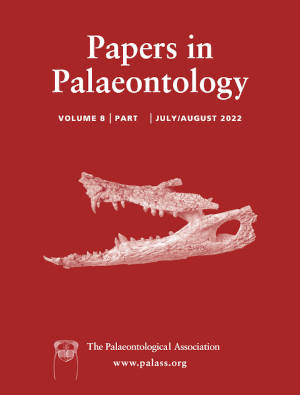Article: A Miopetaurista (Rodentia, Sciuridae) cranium from the Middle Miocene of Bavaria (Germany) and brain evolution in flying squirrels
Publication: Papers in Palaeontology
Volume:
8
Part:
4
Publication Date:
2022
Article number:
e1454
Author(s):
Montserrat Grau-Camats, Ornella C. Bertrand, Jérôme Prieto, Sergi López-Torres, Mary T. Silcox, and Isaac Casanovas-Vilar
DOI:
10.1002/spp2.1454
Abstract
Abstract Flying squirrels (Sciurinae, Pteromyini) are the most successful group of gliding mammals. However, their fossil record mostly consists of isolated dental remains that provide very limited insights into their palaeobiology and evolution. The first skeleton of a fossil flying squirrel, belonging to the species Miopetaurista neogrivensis, has been described only recently. It presents all the diagnostic gliding-related postcranial features of its extant relatives and shows that this group has undergone very little morphological change for almost 12 myr. However, the associated cranium is badly crushed, and particular details of the cranial morphology cannot be described. Here, we describe a well-preserved cranium of the closely related Miopetaurista crusafonti from 12.5–12.0 Ma from Bavaria (Germany). Its cranial morphology is found to be almost identical to extant large flying squirrels, even in details such as the position of the foramina. The virtual endocast also shows close affinities to living large flying squirrels in morphology and in the relative volume of different brain regions, showing diagnostic features such as the size reduction of petrosal lobules and olfactory bulbs. However, the encephalization quotient (EQ) and neocortical ratio are lower than observed in extant flying squirrels. EQ is known to increase through time in squirrels, but might also be related to locomotion, given that arboreal and gliding squirrels display higher EQs than terrestrial ones. Because Miopetaurista was certainly a glider, its comparatively lower EQ and neocortical size support the existence of an independent trend of increasing EQ and neocortical complexity in this flying squirrel subclade.
